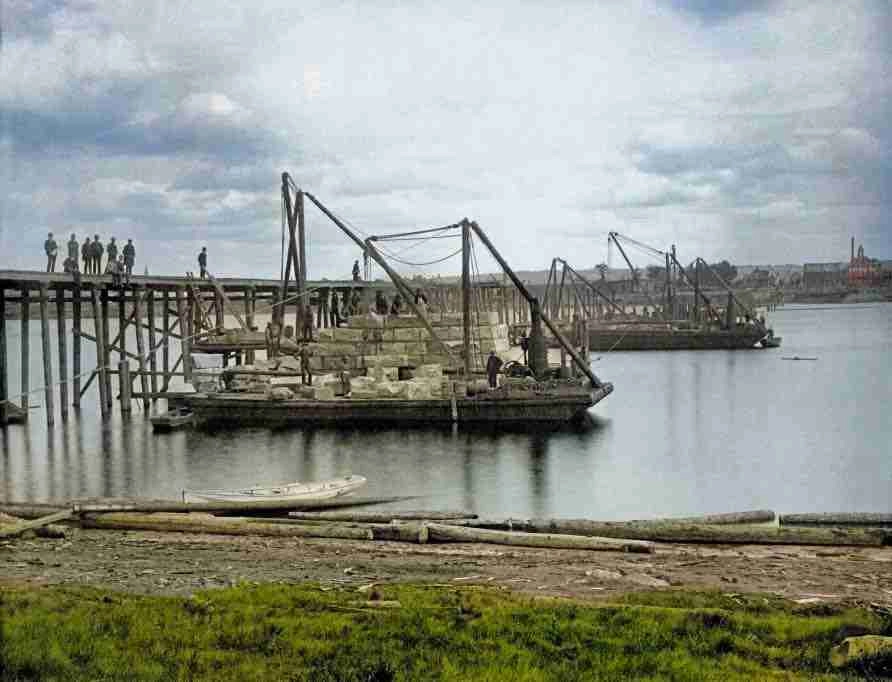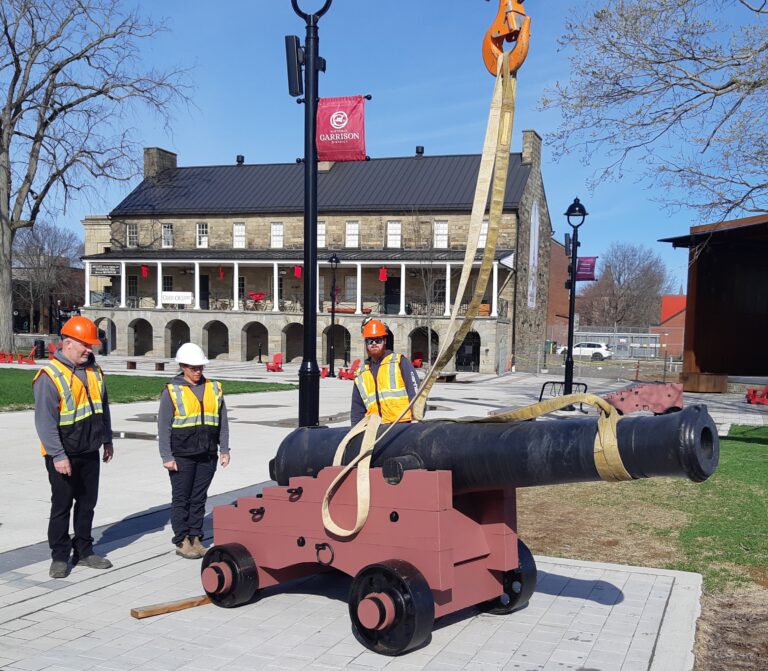Introduction
If you are from Fredericton, chances are high that you found yourself passed by a 70-year-old marathoner, or perhaps, you had been run off the trail by a gang of electric scooters.
Feeling disappointment upon seeing someone double your age exercising twice as hard as you ever could, or maybe a bit of rage toward the group of kids that ran over your toe… everyone has a trail story.
But, the city can’t get run over by scooters or feel guilt imposed by people double their age, so, what is their trail story?
This article explores the history behind walking trails in Fredericton during the transitional period of rails to trails.
Ultimately to review some of the historic characters responsible for today’s trails, the debates associated with trailway establishment, and the controversies associated. Of which, lead us to where we are today.
Past Train Tracks
The 1850s ushered in a grand era of railway building in New Brunswick, as in other Atlantic Provinces in Canada.
The province was disconnected, and requirements to forge commercial links were required to expand the railway.
Before its entry into the Canadian Confederation, New Brunswick had one condition, which was the demanded construction of a railroad to allow economic relations with the other existing Canadian provinces.
Samuel L. Tilley, a former premier of New Brunswick who had become lieutenant-governor of the province, exclaimed the benefit after railway establishment,
“A barrel of flour would cost a dollar less in New Brunswick!”
But, the establishment throughout the province required large-scale landscape reform.
For example, when a causeway was built over the Sackville marshes, or even when a tunnel was built through Morrissey Rock.
How could a train cross Saint John’s Reversing Falls? What kind of bridge was needed?
…It was a sizable challenge for early 19th-century knowledge and know-how.
It called for felling trees to open the way for the iron giants, then, to level the ground, raise the rail bed and finally put down rocks, ties, and then tracks.
Beyond preparing land, existing buildings, as well as abandoned and cultivated land required relocation as they sat in the way of the proposed railway..
Where do the houses go, what should they be replaced with – who leaves and who stays?
It was largely a moral dilemma.
For example, in Madawaska County, an estimated 300 farm buildings alone were relocated to make way for the Transcontinental Railway.
Many complications later, the railways were completed, but train stations were still lacking and required an organized facility for the arrival, departure, and transfer of trains and people.
Consequently, 25 stations were built along the route of the Gulf Shore Railway. Being a short line railway on the south shore of Chaleur Bay in New Brunswick, the Gulf Shore ran for 120 kilometers between Bathurst and Tracadie with a spur line to Shippagan.
Among the contributions, it is felt by many that the Intercolonial railway is responsible for creation of prosperous new parishes, such as Saint-Quentin and Kedgwick, both located in the heart of a vast wooded region that was not easily accessible in the early 1900s.
No matter the challenge or the obstacle, the arrival of a railway and transition from sails and wood to iron and coal was a highly anticipated change by citizens of New Brunswick and specifically Fredericton.
At the turn of the 19th century, that ever-so-anticipated transition came.
The Railways
Rhythmic chugging of CN locomotives musically echoed throughout the Wolastoq river, resonating as a metronome of success with the promise of industry and development. The iron giants, adorned with polished brass, rolled along shined newly installed tracks, creaking under the weight of its cargo.
Cargo of which stitched together the rural expansion of the Fredericton and New Brunswick we know today.
Coming northeast from Minto, Canadian Pacific rails meandered through Marysville alongside the Nashwaak River, passing today’s Devon Lumber, and continuing on until crossing CNs bridge, better known today as the Bill Thorpe walking bridge.
From the bridge, trains rolled down University avenue toward the Nevil Farm – of who provided produce, goods, and services to UNB.
To the right, was a railway running across McLeod Ave, continuing behind Beaverbrook street and behind the Atlantic Superstore. This railway, which eventually emerged along route 102, continuing through Kingsclear, served as the Centreville subdivision rail and was later abandoned with the creation of the Mactaquac dam (due to displacement and flooding).
To the left of University avenue, sat a railway that then ran straight through Lincoln, along the river, continuing past Oromocto.
The transitional period had been successfully implemented and networks spanned across the entire province. Resulting in the growth of economies, increased connectivity of communities, and provided otherwise unavailable opportunities to people in rural areas.
In 2024, the railways in Fredericton are generally an afterthought. But, just as innovation drove railway creation, it has equally fueled their decommissioning.
But how?
Establishment of Fredericton Trail Coalition (FTC)
It all started in the late 1980s.
Under newly found sustainable initiatives of the late 80s, the rails were to be removed – the city’s main source of transportation.
After all, rail traffic in Fredericton began declining during the postwar era as new highways were opened and shippers converted to trucks.
Dependance on the railway by citizens resulted in transitional difficulties… leaving many feeling anxious.
Never-before-seen ideas began emerging, setting forward new and transformative discussions.
A man by the name of Bill Thorpe had an idea not previously considered.
It must be considered, before continuing, that during the transitional period of the late 80s and early 90s, the province as a whole experienced a period of ranging economic challenges, with shifts in large industries affecting employment.
As such, the replacement of railways disrupted communities leaving many of those who maintained the rails, jobless.
Ultimately, during this period, the daily lives of people were actively being reshaped… and many were scared of change.
Thorpe’s Vision
The vision of Thorpe’s set to connect the north and south side of the city through a trail system, utilizing the unused trail systems.Later possible through the Irving Family’s generous donation of 377 km of abandoned rail line, including the CN Railway Bridge (now the Bill Thorpe Walking Bridge), to the Province of New Brunswick in October 1996.
Many thought,
“They took the trains, and now, they want me to… walk?!”.
Thorpe and his friends said,
“Yes!”
People rolled their eyes, laughed, and even went as far as physically protesting. Throwing rocks at Thorpe as he campaigned door to door of houses sat along the – now removed – railway. Two major issues prevented the people from agreeing with him.
(1) The city’s decision to replace the old Carleton Street Bridge with the Westmorland Street Bridge led to a debate about the fate of the former.
Some wanted to use the bridge as a pedestrian and cycle bridge (especially Thorpe), proposing a trust fund and rental fees from the New Brunswick Electric Power Commission to fund the bridge’s maintenance. However, the City Council voted to remove the superstructure at a significant cost, sparking controversy.

(2) The second issue revolved around the Valley Trail, formerly the Saint John & Quebec Railway Valley Line, abandoned in 1967.
By 1980, disputes had already risen over the use of the railway. Following disputes, efforts led by Patty Trail were made in order to capitalize on the unused resource and establish a scenic trail reaching from Woodstock road to Mactaquac.
But, just a year prior in 1979, the City of Fredericton had already recognized the significance of these trails by designating them as “linear park,” safeguarded by special bylaws.
When Trail discovered that the abandoned rail line extended from Golf Club Road to McIntosh Brook and had been acquired by the City of Fredericton, she realized the true possibilities of establishing a permanent multi-use walkway.
Additionally, the remaining portion of the right of way between McIntosh Brook to Mactaquac was owned by the New Brunswick Electric Power Commission .
She, after review, decided to make efforts to gain government support.
Trail’s efforts proved successful when she received large amounts of support from city staff members Richard Danziger and Jim McElman, along with Councillor Gerry Ward.
Patty even managed to persuade the Kiwanis Club of Fredericton, under its president, Walter J. Dohaney, to invest a large sum of money in making the Valley Trail a viable proposition.
However, disputes specifically arose when some residents, whose properties were adjacent to the right of way, contested its use as a trail, causing tension.
Preventing controversy, the Kiwanis Club withdrew its offer. Furthermore, the city was unwilling to take legal action in the courts, which would have been necessary to represent the broader interests of Fredericton against the concerns of a few individuals.
At this point, Fredericton Heritage Trust and its president, Penny Ericson, entered the picture.
Ericson intervened to address the broader heritage concerns related to the Valley Trail and the city’s “built and natural heritage.”
Ericson fought the case, and won. Marking a turning point in the establishment of the Valley Trail and trail development across the city.
Following the judge’s decision, residents along the abandoned railway right of way were offered 10-year leases, a process that started shaping the complete extension of the Valley Trail to the city limits at McIntosh Brook.
Thus, negotiations for further expansion beyond the city limits to Mactaquac began.
Moving forward with Valley Trail development was the start of many more initiatives led by citizens of Fredericton, and, as such, Trail and Ericson’s efforts revealed the true value of multi-use trails.
Thorpe knew this already, and seeing the previous successes of the past, knew mainstream incorporation of trails was dearly required.
Where now, arguments against Thorpe had been proven false, people started to think, and believe in his points… It would be nice to go for a bike ride, or even a walk, people thought.
Thus, the pioneers of the past such as Trail and Ericson, among many others, fueled the establishment – little did they know – of one of the most promoted and prominent features which grasps the city today. With newfound support in 1993, New Brunswick Trails Council Inc. was established, and later the FTC was born in the year of 1994.
Born out of the need for a dedicated organization to oversee trail management.
The FTC grew and didn’t stop growing, with active groups such as the Fredericton Freewheelers, Capital City Road Runners, Outdoor Enthusiasts of Fredericton, and the Wostawea Ski Club holding their own events.
It was a key pivotal point of trail history and is summarized as the beginning of a collaborative effort between the Coalition and Fredericton Heritage Trust.
In later years, the first section designated as part of the Trans Canada Trail was completed on the Northside in 1996.
The railway bridge opened the next year, allowing the route to continue south along the Saint John River (the Lincoln Trail).
Finally, on International Trails Day in 2008, the walking bridge was renamed the Bill Thorpe Walking Bridge.
Over the years, the linear park system expanded to encompass over 50 kilometers of trails by 1998. Now, in 2023, there are 120 approximate kilometers of trailways.
Presently in Fredericton
A lot has changed since Thorpe walked the trails petitioning in the 1980s. Today, the City of Fredericton’s 2007 Master Plan outlines projected changes and improvements to the trail system focused on active transportation1.

Overall, the master plan aims for attractive, diverse, visible, connected, accessible, safe, accommodating, integrated and fairly distributed trails.
Considering many social – inadequate knowledge of safe walking routes – and physical – a steep hill – barriers, the city aims to build on the efforts of Thorpe and provide a totally inclusive trail system with wide reaching benefits.
Currently, the city provides groomed trails in Killarney lake allowing for cross country skiing within the area.
Furthermore, installation of adult fitness stations along the trail systems enables use by adults with a wide variety of fitness levels, and serves as an outlet for healthy activity.
Dedication from non-profits such as the FTC is evident in appreciating the trails. With their partnership with the Trackside Studios, the FTC installed a vibrant mural set along the New Brunswick Exhibition Grounds horse barns for all trail users to see.
Conclusion
In conclusion, from the debates over the fate of old bridges to the battles to secure the Valley Trail, every challenge met, and every hurdle overcome, pioneered the way for the vibrant network of trails that blesses the city of Fredericton today.
Therefore, as we stroll along these trails, whether on foot, bicycle, or wheelchair, we reap the rewards of determined individuals like Bill Thorpe and the collaborative efforts of organizations like the FTC.
Where past history sits woven into the fabric of the present, the commitment of those who came before us has paved the way for enjoyment today.
So, as we explore these paths, let us reflect.
From the early days of establishment of indigenous communities from railway expansion to the present, these paths have sat witness to significant changes in the city’s landscape, let us not forget the legacy of the iron giants and the dedicated trailblazers who have made Fredericton’s trail system a treasure we can all cherish.
In the words of Patrick Polchies,
“As you walk the trails of Fredericton and consider the history that surrounds them, don’t forget to look beyond the buildings, bridges and roadways to the distant past. The woodlands and river shores of the “Celestial City” have changed over time. Now, my own ancestral connections, although much older, resemble the sentiments of many contemporary Frederictonians.”
- Active Transportation (AT) is normally defined as any form of non-motorized transportation such as walking, skiing, cycling, inline skating and jogging. These modes may also be combined with public transit, shopping and entertainment areas, school and other community facilities like recreation centers (The City of Fredericton, 2007). ↩︎




